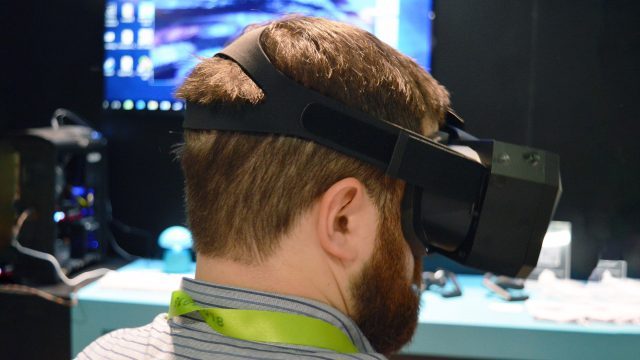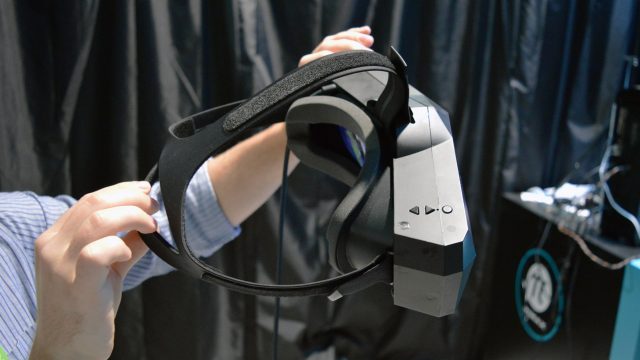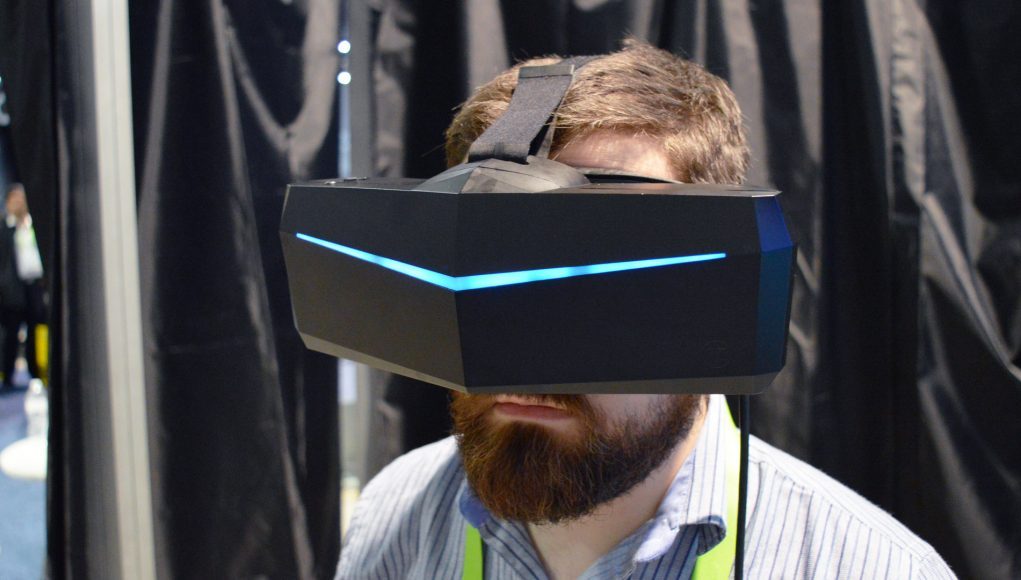Tracking Trouble

At the moment, tracking on the Pimax “8K” is a mess. The tracking is powered by SteamVR Tracking, the same as the Vive—which we know is capable of very good tracking—but it seems Pimax has yet to master it. Latency is far above acceptable levels for a shipping headset, which is very noticeable as you rotate your head. Positional tracking is… there… but it’s choppy as you move through the world. It isn’t clear to me which part of the motion-to-photon pipeline is causing the bottleneck; what is clear is that the tracking quality and latency isn’t yet where it needs to be.
On this particular hands-on with the Pimax “8K” they weren’t demoing their VR controllers, but when I tried them with a prior prototype in November their tracking performance didn’t instill any more confidence than what I saw today.
A Question Mark on Ergonomics

Assuming they can hone in on and fix up the issues above, there’s still a big question about ergonomics and long-term comfort. For now the headset is using a soft strap similar to what shipped originally with the Vive. To get the headset in the prime viewing position, you really need to crank the side straps tight, using the headstrap and the headset like a vice for your face. The Pimax “8K” is lighter than it looks, but still, having almost 100% of the weight simply pushed against the front of your face is not a recipe for long term comfort, as HTC discovered and eventually remedied with the Vive’s Deluxe Audio Strap.

Pimax is planning to upgrade to a rigid headstrap with a ‘halo’ design that rests much of the display enclosure’s weight on the forehead, and grips around the back of the head with a ratcheting strap. That stands to be more comfortable than the face-vice approach, but we’ve yet to see the company demo the headset with the upgraded strap, so it remains an unknown. Ergonomics aren’t easy.
– – — – –
Above is a lot of detail about what ultimately boils down to this: the Pimax “8K” has potential, but it’s still up in the air whether or not the company can sufficiently tune up the headset to please consumers who are pitting the small startup against expectations set by the top companies and headsets in the industry. There doesn’t seem to be any unproven hurdles in their way, but it’s going to take careful execution to get there.







